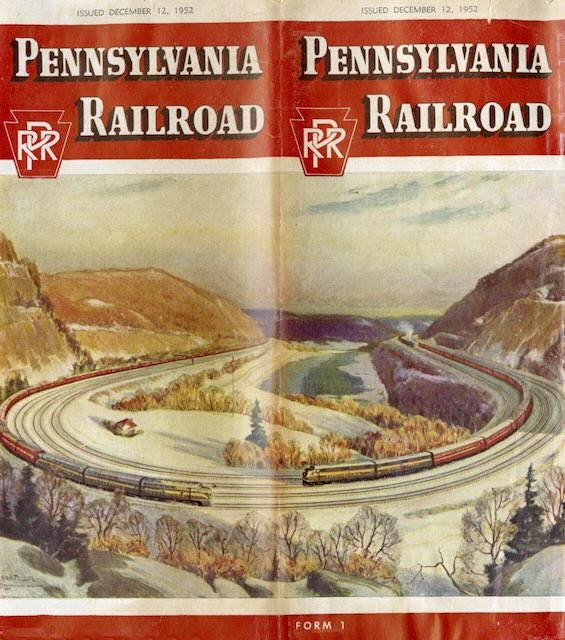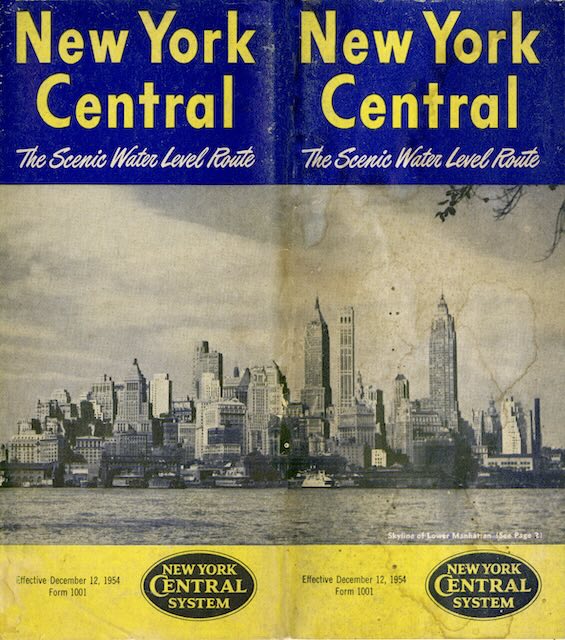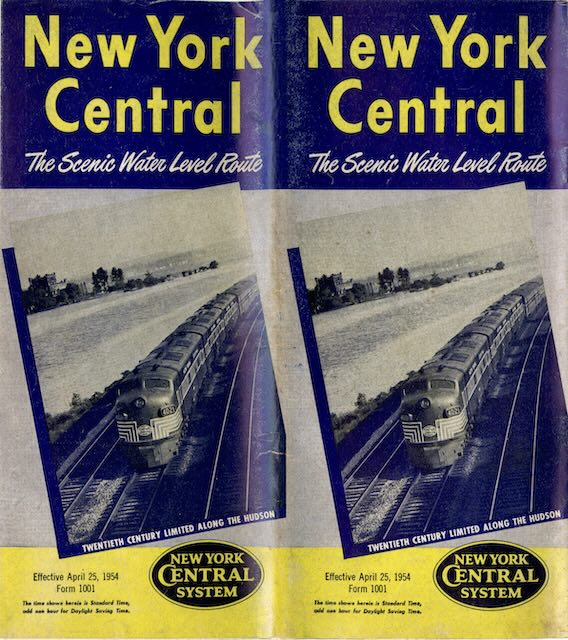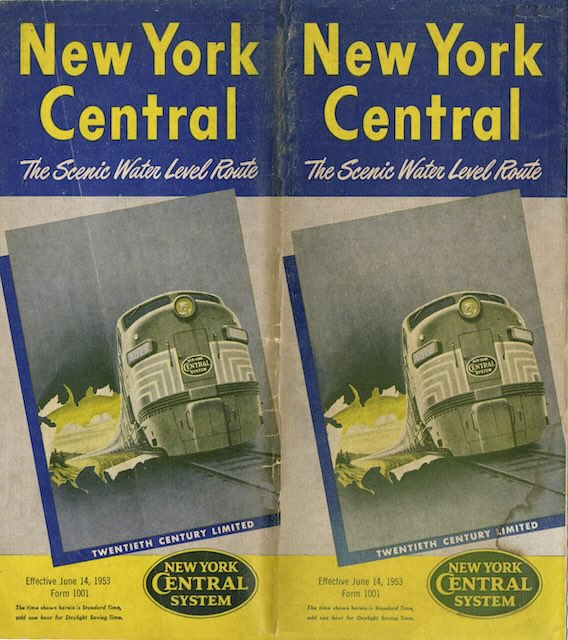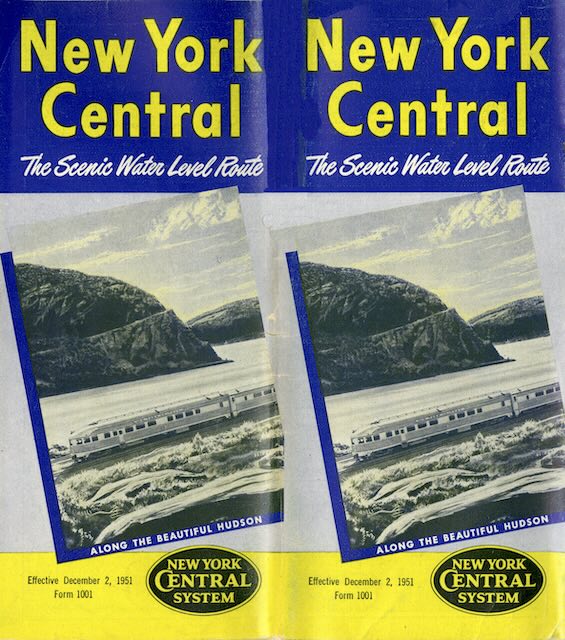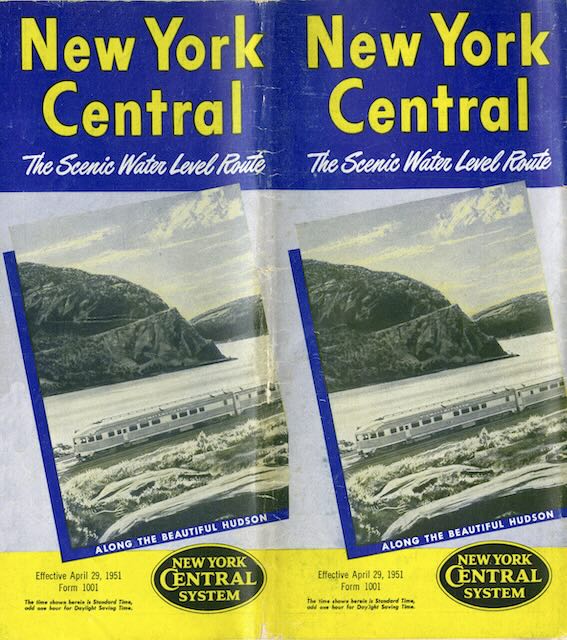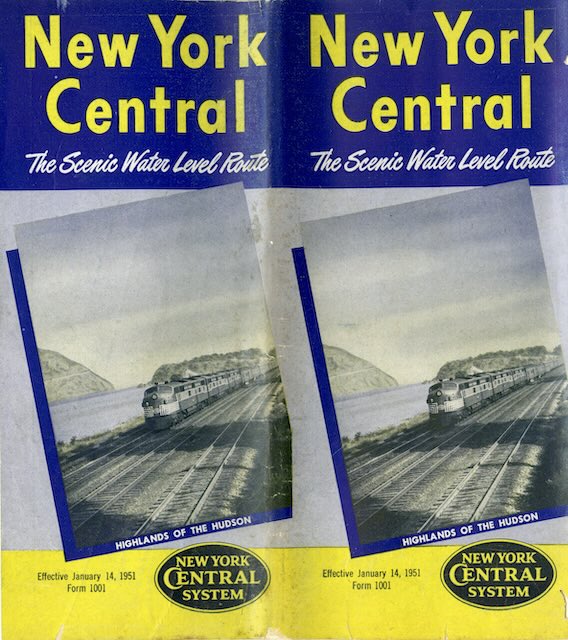In 1955, Pennsylvania’s timetables shrank from 56 to 52 pages, which is the size of today’s timetable. It’s difficult to see what’s missing, as the tables have been reorganized and renumbered. A few branchline trains that were running in 1954 may have stopped in 1955.
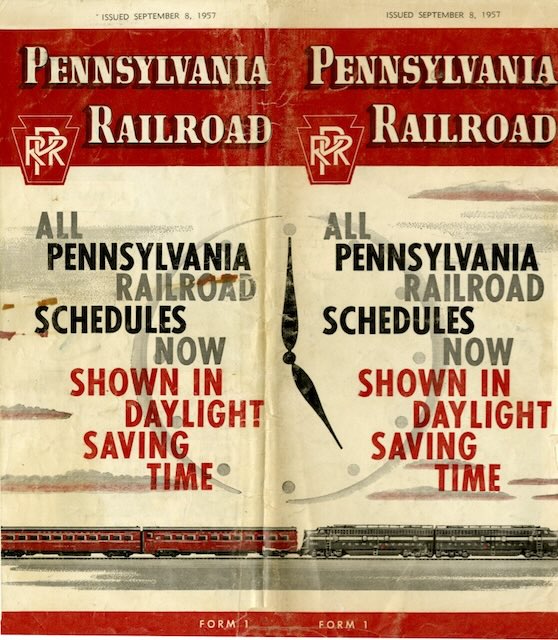 Click image to download a 26.1-MB PDF of this 52-page timetable.
Click image to download a 26.1-MB PDF of this 52-page timetable.
Although Grif Teller did calendars for PRR in 1957 and 1958, the railroad stopped using his paintings on its timetable covers after 1956. This probably an economy decision: along with Missouri Pacific, PRR was one of the only railroads to use four-color illustrations on its timetables. Indeed, to save money, the Grif Teller painting used on the March 1956 timetable was printed in black-and-white. Continue reading

